From Penguin to Panda, Google’s updates have always been a measuring stick for our SEO strategies. We used to be able to focus on a certain part of our website to fix, but this has changed with the dawn of ‘broad core’ algorithm updates.
We’re now seeing broad core algorithm updates that take into account our work across the whole spectrum of SEO, be that how fast our site is, the number and quality of our links from relevant sources, or how authoritative our content is.
August, March, and September (amongst others) are now prefixes for broad core updates where we can pinpoint changes in traffic for the website we work on. These are a mix of confirmed updates from Google and unconfirmed changes where the SEO community has noticed changes.
Looking at 2019 alone, we’ve had a number of confirmed updates:
- Core Update March 2019
- Core Update June 2019
- Core Update September 2019
This has also been followed by numerous unconfirmed updates up to as recently as November.
Each of these updates has impacted a wide variety of sites. Looking at data from Ahrefs, here are some examples of large sites that have been hit by algorithm updates over the past year:
DailyMail
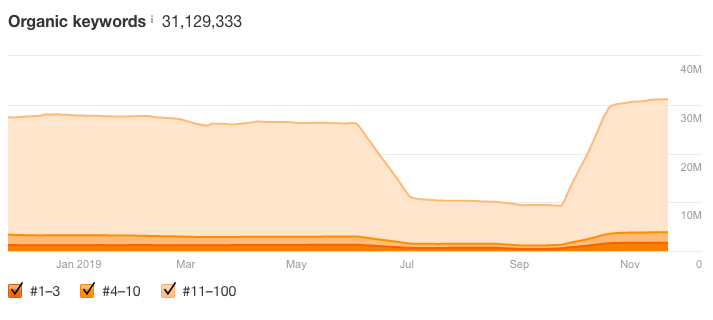
Examine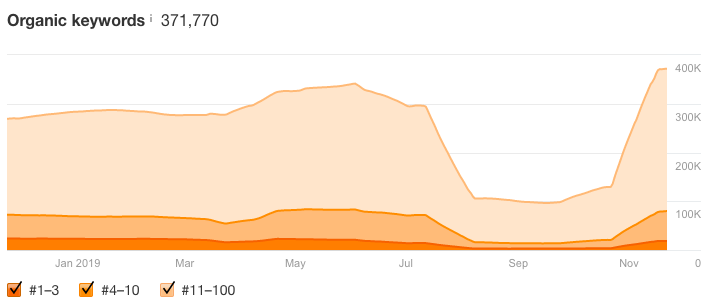
Nuffield Health
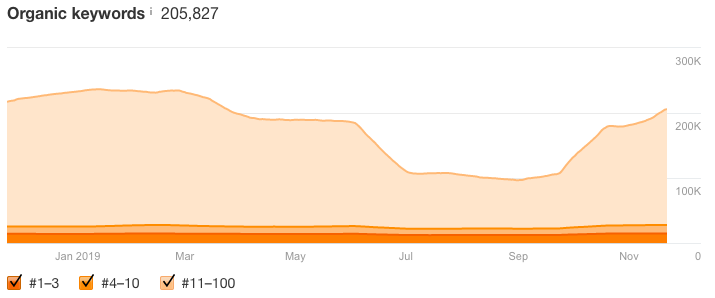
Looking at the above, we have a mix of publishers and health-related websites. What’s clear is that these broad core algorithm updates can remove a lot of traffic and then give it back to you on the next update. Not panicking when your site is hit by one of these updates is a core part of handling this process.
[Ebook] Technical SEO for non-technical thinkers
What does a ‘broad bore algorithm’ update mean?
The name is self-explanatory. As Google puts it, such updates focus on ‘broad changes to our search algorithms and systems’ with no specific focus in each area. The information we get from Google here is limited, as can be seen in Google’s new “What webmasters should know about Google’s core updates” article:
“As explained, pages that drop after a core update don’t have anything wrong to fix. This said, we understand those who do less well after a core update change may still feel they need to do Something.“
While it does make sense that a page doesn’t necessarily have anything ‘wrong’ with it, trying to explain that to a client who is suffering drops in revenue is a difficult task.
Diagnosing an algorithm update
Many SEOs have access to a large range of tools to understand ranking drops. These can identify keywords and landing pages which have been hit. Using some of Google’s own tools is the best way to provide insight and understand how to progress.
Search Console
The first port of call is the Search Console performance tab. By accessing this data we can see where our clicks have dropped off a drill down to specific landing pages. This is an example of an account of ours which was hit by the update in March:
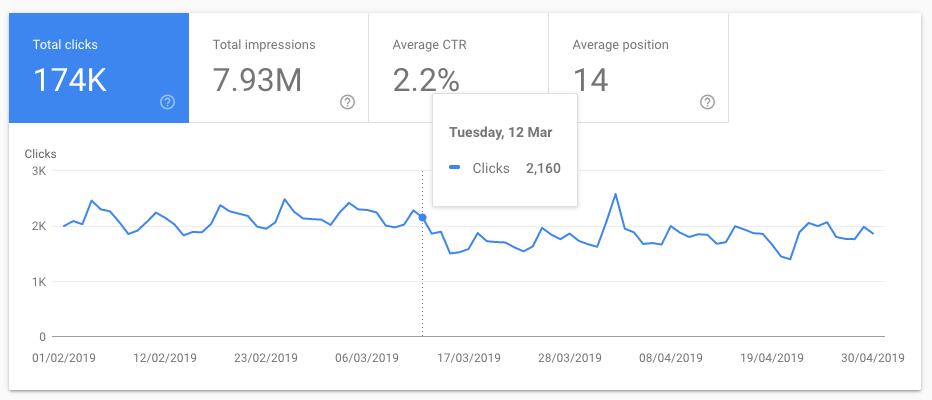
Looking at the graph, we can see that traffic dropped after March’s update. The next step in Search Console here is to use the compare date option and filter the traffic from before and after with an equal amount of days either side to get valuable click data. With this particular client this looked like the following:
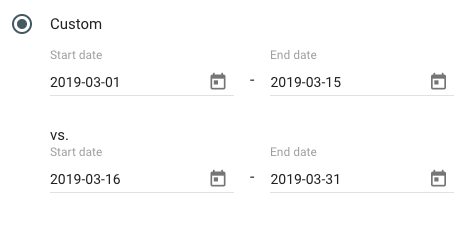
Using the dates above we will get a good idea of what’s dropped off by landing page, keyword, and device, which helps us to answer a number of questions.
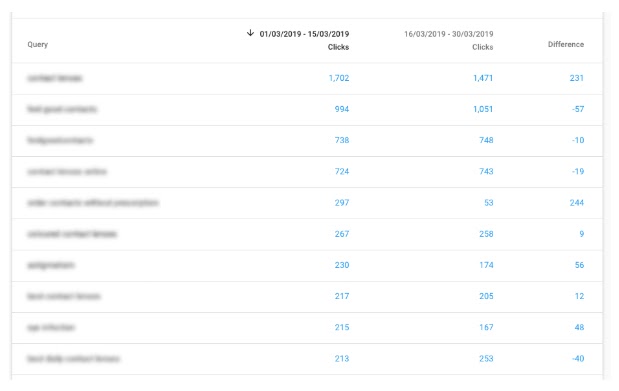
Where the number on the right-hand column is positive, it means we had more clicks on this keyword before the update rather than post-update. We can then match these keywords up with landing pages to understand where these have dropped off:
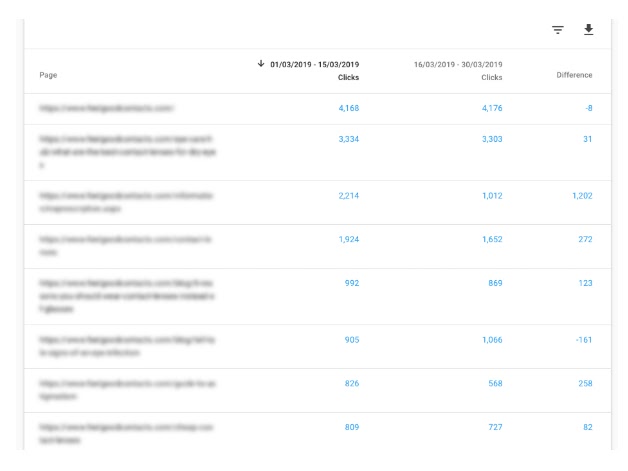
Alongside our keyword drop data we now have this segmented by landing page. With this data, we can start to understand where our drops are and attribute this to certain areas of the site.
There are numerous other ways to use Search Console to assess the effect of updates:
- Filtering by country to see if its a particular market that’s been affected
- Looking at users’ device types to see if there are any differences between devices
- Using the ‘Search Appearance’ filter to see which rich results are showing such as product or FAQ
Analytics
Google Analytics is another great place to dig into where this traffic has dropped off. Combining this with Search Console data will give you further insight into the changes that have occurred.
Going to Behavior > Site Content > Landing Pages, then filtering by ‘Organic Traffic’ will let you dig further into the issues highlighted by Search Console. This will give you more accurate data and allow you to benchmark against previous dates.
Competitor Analysis
Use all of the SEO tools available to you to carry out competitor analysis to understand what they may be doing that you aren’t. This will cover each area of SEO and is a crucial tool for laying out your next steps. At this stage, you need to ask yourself:
- Do your competitors have much higher quality content?
- Do they have more links from relevant sources?
- Do they have greater keyword coverage for topics that are relevant to your service offering?
Planning an algorithm hit recovery
At this point, we’ve understood the impact that the algorithm has had on the site, which we would then communicate to all stakeholders. Our next step is to start to plan our recovery. Here are a few areas where you will need to focus on to manage the process.
E-A-T
In any algorithm recovery, this concept is likely to raise its head. E-A-T stands for Expertise, Authority and Trust. It originated from Google’s Quality Rater Guidelines, where it was a core part of how the algorithm should be applied to search. I’m not going to go too in-depth as this has been written about to a huge extent already and is well understood.
E-A-T is your whole website, from your backlink profile to the quality and relevance of your content. It’s much more than just giving your content an author profile. It isn’t just a single algorithm. It’s millions of little algorithms that make up the rankings for your website.
E-A-T is just a concept, not a score
A common misconception that people have is that E-A-T can be measured. People often try to measure how much they have improved their E-A-T by looking for metrics and scores. In truth, E-A-T is a concept so this can’t be measured outside of the perceived quality of your site.
E-A-T is your content
Now is a great time to start looking at your content to see if it’s serving a purpose and relevant for your users. These are a few questions to guide you:
- Is this content detailed and relevant?
- Are there links to relevant sources?
- Is the author a valid source?
Answering these questions will help you to identify areas of weakness and help you to set out a plan for improvement.
E-A-T is your link profile
Your link profile plays a key role in your perceived quality. If you’re writing about subjects that affect your health or finances, it’s reasonable to expect that you will have relevant links pointing towards your site from authoritative finance or medical websites.
Managing Expectations
A vital part of planning your recovery is making sure that people understand how the process works. You can’t put together a 3-month strategy and expect rankings to slowly creep back. For the majority of websites impacted by these algorithms, it can take a large amount of time to recover. This may just be the amount of time that it takes for the next broad core algorithm update to come back (as seen for The Daily Mail and Examine at the start of this article).
When traffic is impacted, there will often be people who aren’t well-versed in SEO asking ‘where has the revenue gone?’ Managing these expectations through detailed analysis and strategy is a great way to handle this.
No knee jerk reactions
Be careful not to start drastically changing things too much straight away. I’ve seen examples where money pages have been hit by an algorithm change (causing a large drop in revenue) only to be placed back in their original positions when the next update comes round.
This is an important part of managing the process. By completely throwing your existing strategy out of the window, you won’t be able to see the areas where you are going wrong. I would recommend taking a much more incremental approach to improving your site across all parts (technical, content, and links).
Create a Roadmap
Not everyone who is focusing on SEO will have as deep an understanding as you. It can help to create a roadmap with responsibilities and delivery dates against it. This allows all stakeholders to have a central place where they can see actions that you’re undertaking and your plans about how to regain the lost traffic.
These roadmaps aren’t one size fits all but this example features a few of the tasks that you would focus on after an algorithm update:
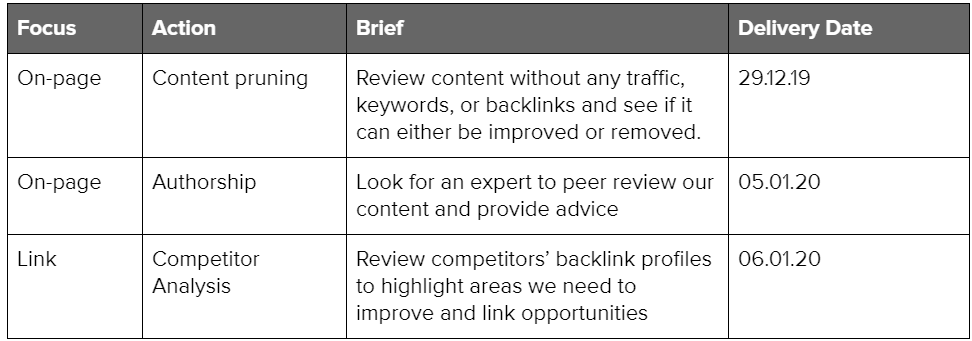
This can be shared with everyone involved and can act as a central point for people to understand the work that’s being undertaken. Obviously, this is much better placed into project management software but this is the barebones version of it.
Conclusion
There is no defined template or silver bullet on how to recover from an algorithm update. You will have to focus on your website as a whole rather than thinking there is a single part that’s causing the algorithm hit.
As SEOs, we need to make sure that we’re clear with our plans for recovery as well as involving everyone throughout the process and making it easily digestible.

